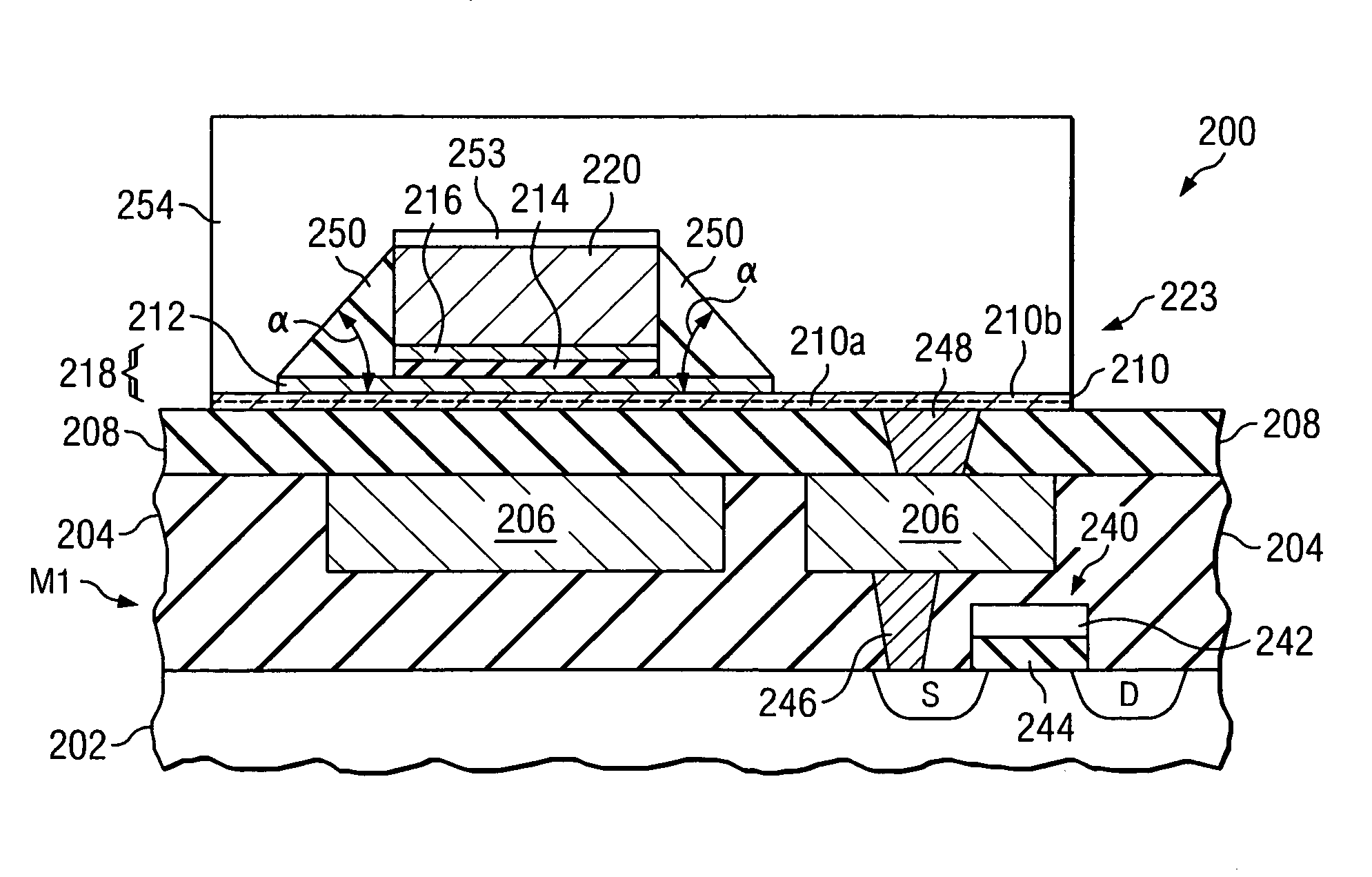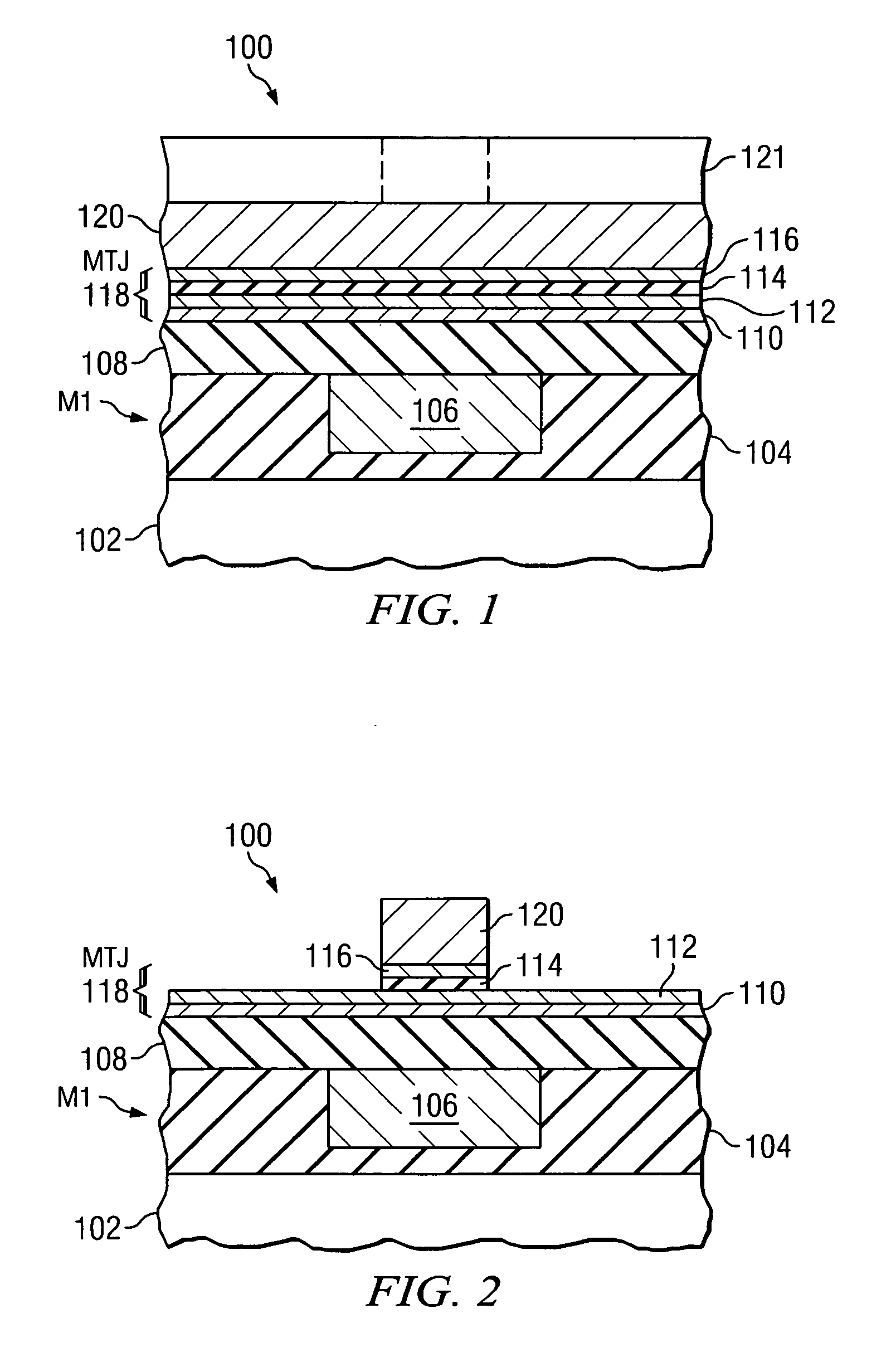Methods of patterning a magnetic stack of a magnetic memory cell and structures thereof
a magnetic memory cell and stack technology, applied in the manufacture/treatment of galvano-magnetic devices, semiconductor devices, electrical apparatus, etc., can solve the problems of shortening the device life, achieve the effect of reducing the number of mask levels, reducing device failures, and improving yield
- Summary
- Abstract
- Description
- Claims
- Application Information
AI Technical Summary
Benefits of technology
Problems solved by technology
Method used
Image
Examples
Embodiment Construction
[0021] The making and using of the presently preferred embodiments are discussed in detail below. It should be appreciated, however, that the present invention provides many applicable inventive concepts that can be embodied in a wide variety of specific contexts. The specific embodiments discussed are merely illustrative of specific ways to make and use the invention, and do not limit the scope of the invention.
[0022] The present invention will be described with respect to preferred embodiments in a specific context, namely an MRAM device. Embodiments of the present invention may also be applied, however, to other magnetic memory cell designs and magnetic semiconductor device applications. Only one MTJ is shown in each of the figures. However, a plurality of MTJ's may be simultaneously formed using the manufacturing processes described herein. For example, an array of MTJ's may be patterned using embodiments of the present invention. The present invention is particularly beneficia...
PUM
| Property | Measurement | Unit |
|---|---|---|
| width | aaaaa | aaaaa |
| angle | aaaaa | aaaaa |
| thickness | aaaaa | aaaaa |
Abstract
Description
Claims
Application Information
 Login to View More
Login to View More - R&D
- Intellectual Property
- Life Sciences
- Materials
- Tech Scout
- Unparalleled Data Quality
- Higher Quality Content
- 60% Fewer Hallucinations
Browse by: Latest US Patents, China's latest patents, Technical Efficacy Thesaurus, Application Domain, Technology Topic, Popular Technical Reports.
© 2025 PatSnap. All rights reserved.Legal|Privacy policy|Modern Slavery Act Transparency Statement|Sitemap|About US| Contact US: help@patsnap.com



